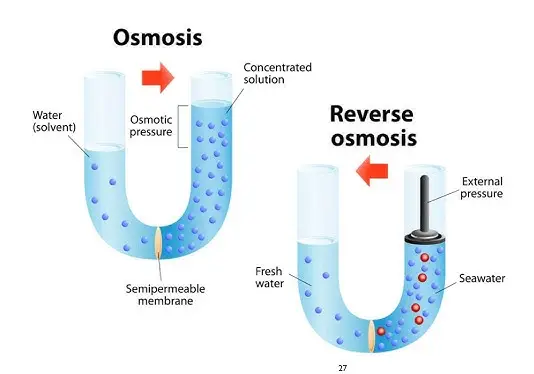
Understanding Reverse Osmosis (RO) Filtration
A Reverse Osmosis (RO) plant is one of the most effective water purification systems, removing many contaminants. Let's dive into what impurities an RO plant removes and how this process ensures safe drinking water.
Why Do We Need an RO Plant?
With rising pollution and increasing contamination in water sources, an RO plant is crucial for ensuring safe drinking water. Tap and groundwater often contain harmful substances that can affect health, making RO purification a necessity rather than a luxury.
Common Impurities in Water
Before discussing what RO removes, let's first understand what could be lurking in untreated water:
- Heavy metals like lead, arsenic, and mercury
- Harmful bacteria and viruses
- Chlorine and fluoride
- Pesticides and chemicals
- Dissolved salts and minerals
- Pharmaceutical residues
These contaminants can cause serious health issues if consumed over time.
Heavy Metals Removed by an RO Plant
RO systems effectively remove dangerous heavy metals that can cause severe health conditions. Some of the most common metals filtered out include:
- Lead – A neurotoxin that affects brain development, especially in children.
- Arsenic – A carcinogenic metal linked to various diseases.
- Mercury – Can damage the nervous system and kidneys.
- Cadmium – Associated with kidney disease and bone damage.
These metals often enter water sources due to industrial waste and soil contamination.
Chemical Contaminants Eliminated
Modern water sources contain several chemical pollutants from industrial discharge and agriculture.
RO plants remove:
- Chlorine – Used for disinfection but can produce harmful byproducts.
- Fluoride – Beneficial in small amounts but excessive levels can harm teeth and bones.
- Nitrates and Nitrites – Found in fertilizers, they can cause serious health risks, especially in infants.
These chemicals can pose long-term health risks, making RO purification a necessity.
Bacteria, Viruses, and Microorganisms
A major benefit of RO filtration is its ability to remove harmful microorganisms that cause diseases:
- E. coli – A common bacteria leading to food poisoning.
- Salmonella – Causes severe stomach infections.
- Hepatitis A Virus – Spread through contaminated water sources.
While UV filters can be used alongside RO for extra protection, the semi-permeable membrane itself significantly reduces microbial contamination.
Dissolved Solids and Salts
Hard water contains excess dissolved salts, which can lead to issues like:
- Kidney stones
- Scaling in pipes and appliances
- Poor soap lathering
RO plants effectively remove calcium, magnesium, sodium, and potassium, softening water and making it safe for consumption.
Pesticides and Industrial Pollutants
Pesticides and industrial waste seep into groundwater, contaminating drinking water supplies. RO filters remove:
- DDT and other pesticides
- Herbicides
- Solvents and chemicals from factories
These contaminants have been linked to cancer, hormonal imbalances, and neurological disorders.
Fluoride and Chlorine Reduction
While fluoride and chlorine are added to water for public health benefits, excessive levels can be harmful. RO plants help in reducing excess fluoride and chlorine, ensuring balanced and safe drinking water.
Pharmaceutical Residues in Water
Recent studies have found traces of medicines like antibiotics, hormones, and painkillers in tap water. RO plants help in removing these residues, preventing potential health risks.
How to Maintain an RO System for the Best Performance?
To keep your RO plant working efficiently:
- Replace filters regularly
- Clean storage tanks periodically
- Check for leaks and damages
- Ensure proper water pressure
Regular maintenance extends the lifespan of your RO system and maintains water quality.
Conclusion
A Reverse Osmosis plant is one of the best ways to ensure safe, clean drinking water. From heavy metals to bacteria and chemicals, it effectively removes a wide range of contaminants, making it an essential solution for households and industries alike.

